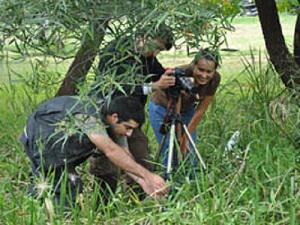Anita Aisenberg
The ai of the project is to implement an educational program to create consciousness on the importance of preserving arachnids and their natural ecosystems in Uruguay.

Arachnids are promising models for ecological and conservation studies. Spiders constitute the seventh order in diversity in the Animal Kingdom, with more than 1000 Neotropical genus. They have an important collective impact on invertebrate herbivore populations. Additionally, some arachnids are extremely sensible to habitat reduction or modification, highlighting their value as ecological indicators.

The hairy Grammostola mollicoma tarantula spider. © Marcelo Casacuberta.
In 2007, a huge spider traffic was discovered in Uruguay (more than 700 Grammostola tarantulas), that were sent to Europe to be sold as pets. There are two Grammostola tarantulas in our country: G. iheringi, endemic from Treinta y Tres province, and G. mollicoma that shows processes of local extinction. Other arachnids that are affected by human impact are two Allocosa wolf spiders that inhabit coastal sand-dunes. The landscape of the coastline in Southern Uruguay has decreased considerably, especially due to urbanism. Both Allocosa species present atypical behaviours that are dramatically constrained by ecological factors. These arachnids, as well as other species, are threatened due to habitat fragmentation, human killing and pet-trade. Uruguay lacks animal welfare or other laws protecting invertebrates and there is very scarce updated information about arachnids available for the community.
The goal of this project is to print the ‘Guía de Arácnidos del Uruguay’ (Arachnids of Uruguay field-guide), enlightening their importance as free insecticides, biological indicators, tools for biological control and as part of our natural patrimony. We will perform interactive activities in selected locations along the country, sharing the knowledge about arachnids and sensitizing about the need of laws for their conservation.
The community will learn about animals that are essential components of our natural patrimony, identifying species that are potentially dangerous to human health, those arachnids that can act as pest controls, those that possess value as biological indicators, threatened species and their problematic.